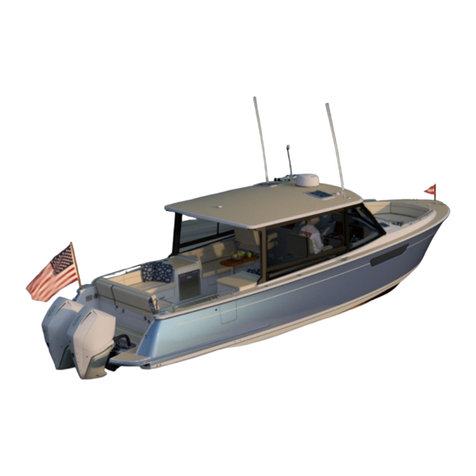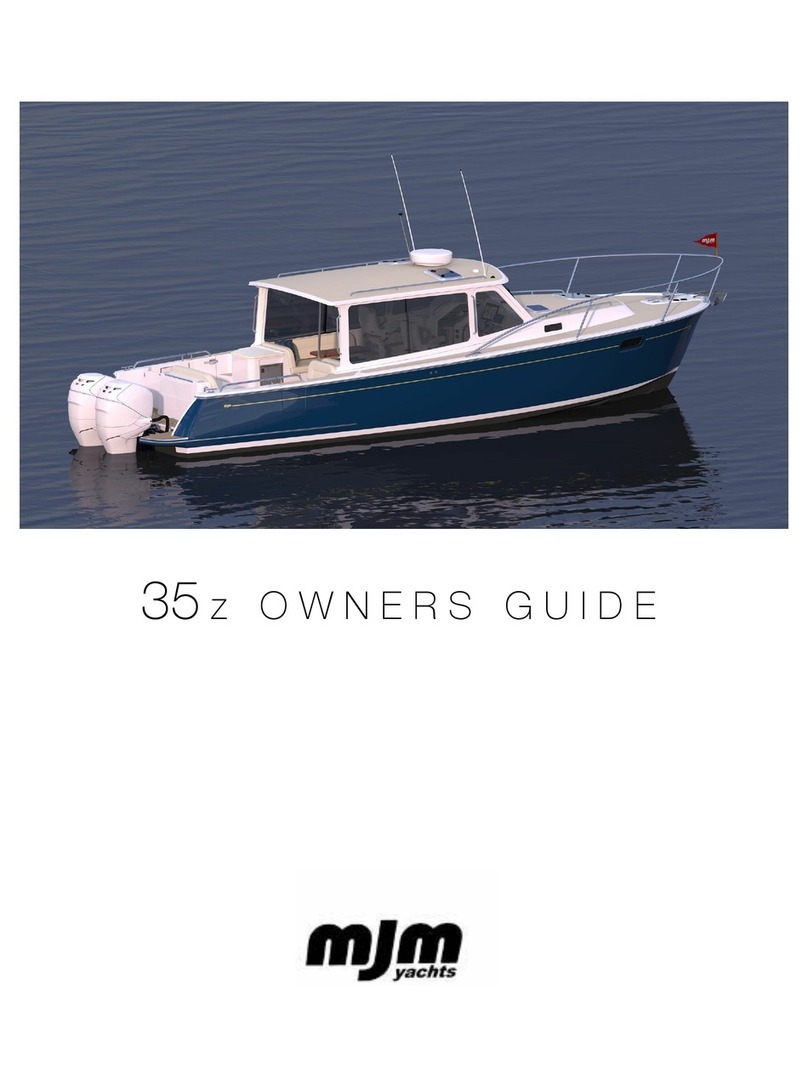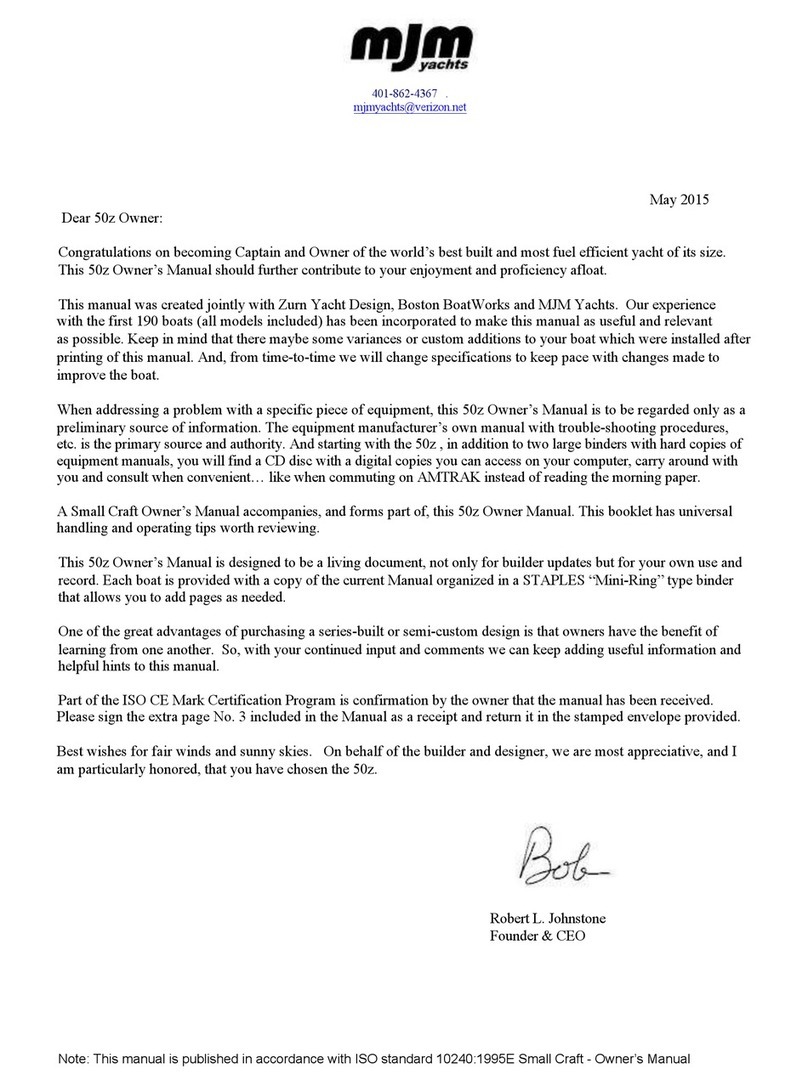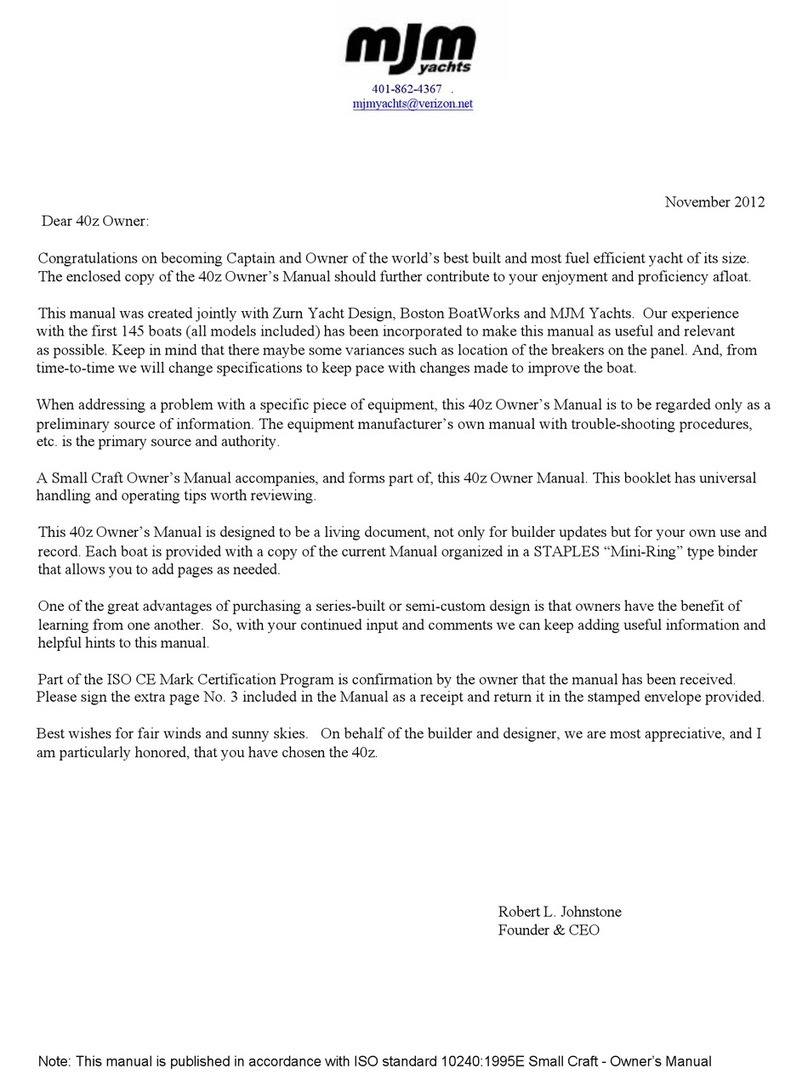
CHAPTER 3 PROPULSION SYSTEM
- 10 - 34z
INTRO - THE TOP 10 CAUSES OF ENGINE FAILURE
It doesn’t happen often and if you’re familiar with the most common causes of engine failure you can cut
down on the chances of a breakdown. As an introductory to this chapter, we want to familiarize you with
this list of causes, compiled by Motorboating Magazine (February 2006). Here are the Top Ten to be
aware of:
1. NO FUEL: This is probably less of a problem on a fuel-efficient MJM than on other boats, but lack of
owner attention to fuel consumption is the primary culprit for engine failure. A boat’s fuel tank can be
nearly dry as a bone – even when the gauge claims there’s a 1/4 of a tank left. This makes sense when
you realize that at cruising speed, the gauge shows the tanks reading higher than when the boat is at
rest. A good rule of thumb is to never pass a fuel dock (no matter what the price) if your gauge is showing
less than 1/3 full.
1b. AIR IN FUEL LINE: If air gets drawn into the fuel lines because of either a small leak in a fuel line
connection or the Racor Filter lid gasket/filter basket tabs have interfered with the lid being secured fully,
you may find the engine will turn over, but won’t start. Check the Racor to insure the fuel level is within
an inch of the top. Check the engine owner manual for the location of a manual primer pump.
1c. COMPUTER SETTING: On the Yanmar electronic engines, we’ve encountered several instances
where after shutting down the engine for several hours (on a picnic); it was only possible to start the
engine after many tries or not at all. The problem was that the setting that determines the amount of fuel
to be injected into the engine upon starting was not set high enough.
2. DIRTY FUEL: Engine problems are caused by dirt and water in the fuel. Debris, stirred up from the
bottom of the tank by wave action, is drawn into the fuel line and clogs the fuel filter element. Starved for
fuel, the engine begins to run poorly, and then not at all. Water in the fuel can drive you mad. Moisture
condenses out of the highly humid air on the inside walls of a fuel tank, then runs down into the fuel.
Water can also be introduced at the fuel dock from a contaminated fuel supply. Fuel floats on top of
water and the fuel pick ups are near the bottom of the tank. A fuel/water separator protects against this
by handily extracting the water. Check the bowl daily and drain off the accumulated water. For severe
contamination, use a fuel drying additive.
3. FUEL BUGS: Diesel engines suffer from microbial bugs growing in the fuel. If left unchecked, these
critters clog filters. If you leave the same diesel fuel in the tank for any length of time, a fuel conditioner
similar to that supplied with your boat by the builder will kill the bugs and break up any hydrocarbon
residue into particles that will burn completely in the combustion process.
4. TIRED/DAMAGED WATER PUMP IMPELLER: As boats age or if
an engine isn’t operated for a long period of time, a worn-out circulating
water pump is another engine killer. Impeller blades are commonly
made of a rubberized material that stiffens or distorts over time and can
break off entirely, reducing coolant flow and clogging the heat
exchanger. Periodic engine maintenance procedures can prevent this
problem. A spare is provided in the Yanmar Spares Kit. Shown at right
is an impeller that would have soon failed. It was discovered, then
replaced during the 50-hour inspection on a 29z that had not been run
for 11 months. Another cause for impeller disintegration is running the
engine with the raw water intake shut off. By the time that the overheating is discovered and you shut
down the engine, the impeller may already have been destroyed or damaged. This happened on a 34z
when the operator forgot to be sure that the raw water intake valve was in the proper position.
5. HARD HOSE: Another issue to be concerned about with older boats. As water intake hoses age,
they lose their resiliency and collapse under suction, causing a restriction in the flow of engine coolant.
This results in over-heating.

































